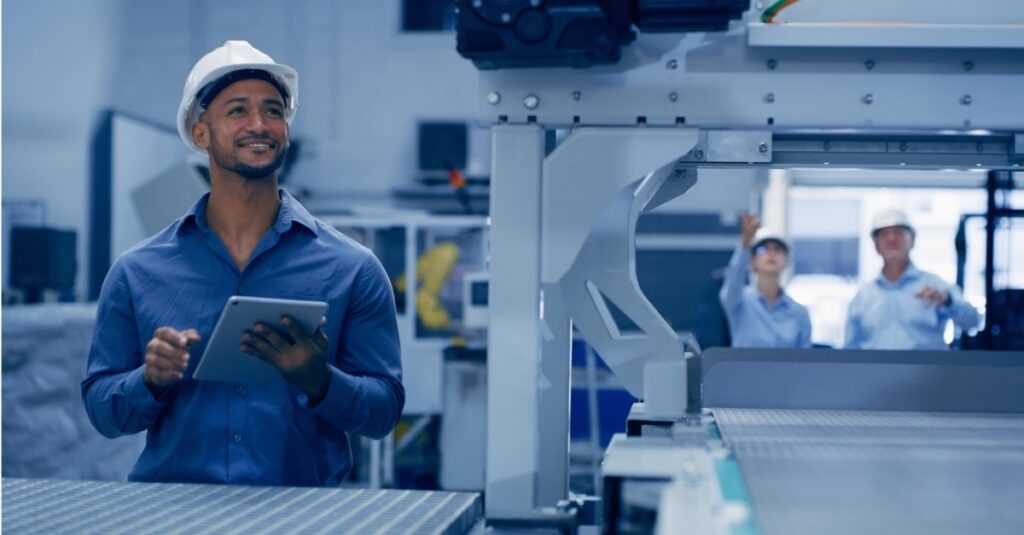To get a true pulse on how the American consumer views the manufacturing industry and how their purchasing patterns may have changed, we issued a survey to 1,000 U.S. adults (18 and older) and their responses may surprise you.
U.S. Manufacturing Viewed As Important, But Not Strong
Jobs. Jobs. Jobs. One thing the majority of respondents strongly agreed on (83%) is that it is important to increase the amount of U.S. manufacturing jobs. However, we went deeper to explore views on if automation can help create jobs and how strong the industry currently is.
- Only 37% of respondents view the state of U.S. manufacturing as “strong” or “very strong”
Eighteen percent of respondents between the ages of 25 and 34 stated that U.S. manufacturing is “weak” or “very weak.” This figure jumps up to 38% in the age bracket of 55-64, indicating a more critical outlook on the industry.
Automation Key to Job Creation
Utilizing the most advanced manufacturing technologies available is critical to enabling the U.S. to compete on a global scale and to reshoring production that is currently conducted overseas. The general consumer is beginning to understand this important concept.
- Sixty-two percent of Americans believe increasing automation in the manufacturing sector will help bring manufacturing jobs back to the U.S.
- Respondents between the ages of 55 and 64 felt the most strongly about this concept, agreeing at a rate of 70%. This was 20 points higher than the youngest age bracket surveyed, 18-24, who agreed with this notion at a rate of 50%.
Changes in Consumer Buying Habits
The ongoing pandemic created a situation that many Americans had never experienced before – the inability to purchase an item they sought due to an unexpected shortage. In fact, more than half of consumers (52%) disclosed that they had on at least one occasion stocked up on food or other items due to the pandemic. However, this wasn’t the only notable change in consumer purchasing habits.
- Respondents aged between 25 and 34 had the biggest change in brand loyalty. Forty-two percent noted that they became less brand loyal during the pandemic, compared to 28% of overall respondents.
- Thirty percent of consumers between 18 and 24 started using Amazon less due to the safety concerns of workers during the pandemic and 37% of that same age group became more aware of the origin of their products.
American-Made Holds Value
The survey showed that price isn’t the ultimate factor when consumers are determining whether or not to purchase a good. Three in four consumers (76%) are willing to pay more for American-made products. The real question is: how much more?
- Twenty percent of respondents noted they’d be willing to spend 5% more to buy an American-made product, 25% were willing to pay 10% more, and 31% would be willing to pay more than 10%.
- Younger populations will pay more for American-made. Forty percent of respondents 18-44 are willing to pay 15% or more for an American-made product, compared to 22% of respondents that were 45+.
This year continues to be like no other in the terms of the challenges that all industries have faced. The strength of the manufacturing industry hinges on manufacturers’ ability to deliver the products consumers need and want under any condition. Machine Health is key to helping manufacturers boost productivity and reliability across their production lines, and helping ensure products make it onto store shelves in order to maintain consumer satisfaction and loyalty. It is the necessary foundation of accelerating digital transformation within the sector and strengthening U.S. manufacturing capabilities.





